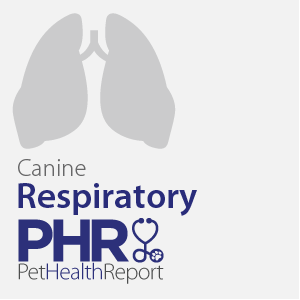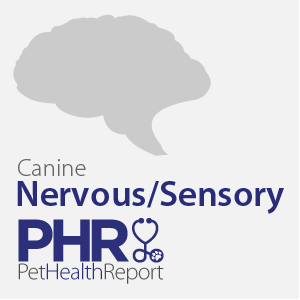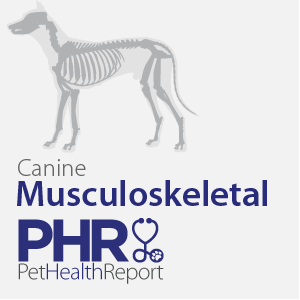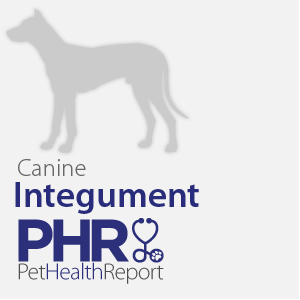



Condition Overview
Research shows 27% of all dogs die from cancer (1) with 50% of deaths in older dogs. Over 100 types of cancer exist, requiring specialized diagnosis, treatment, surgery, nutrition and pain management strategies (2). Cancer can affect any part of the body, particularly the skin, bone, and other major body organs. Cancer is considered to be one of the most important causes of death in older dogs. Some types of cancer are slow-growing while some can progress rapidly and are often diagnosed when it is already in the late stages. Cancer can manifest classical signs of the problem such as a tumor or growth, a wound that fails to heal, enlarged lymph nodes, lameness, swelling, and even abnormal bleeding. However, there are cases where there are little or no signs. An early diagnosis is very important for better chances of treatment and recovery.
Potential Complications that may affect Airedale Terrier Cross
The complications associated with cancer in dogs will depend on the organ/s which are affected and the treatment which is applied. Surgery to remove a tumor has higher risks of infection. There are also risks associated with anesthesia. Bleeding and/or damage to nerves may also occur during surgical removal of the tumor. Swelling and inflammation of the incision site is also a common occurrence. Other possible complications include a weak immune system as a result of the administration of chemotherapeutic agents, kidney failure, heart failure, and bone fractures.
1. Radlinsky et al. Diseases of the Ear. In: Ettinger, SJ, Feldman, EC, Textbook of Veterinary Internal Medicine, 6th Ed. St. Louis: Elsevier Saunders, 2005. (2) www.aspca.org – dog care.
Condition Overview
Diabetes mellitus arises when the beta cells of the pancreas either stop producing the hormone insulin or produce lesser quantities than what is needed by the body. A decrease in the function of insulin can also give rise to the problem. The most common form of the disease in dogs is Type 1 diabetes which is also called juvenile diabetes or insulin-dependent diabetes . This occurs when the beta cells of the pancreas are destroyed. Incidence is higher in females and overweight dogs.
Potential Complications
There are many important complications of canine diabetes. These include prolonged high blood glucose also known as hyperglycemia. Cataracts associated with diabetes are considered the most common complication in dogs. The problem is due to the changes in the lens of the eye caused by hyperglycemia. High amounts of sugar in the body can also promote the growth of bacteria thus a diabetic dog is more prone to developing urinary tract infections. Other important complications of diabetes mellitus include ketoacidosis and insulin shock.
Condition Overview
Symptoms manifested will depend on what part of the body is injured and if there is any damage to a particular organ. Practically, any bone in the body of your dog is susceptible to fracture. Fractures are usually due to trauma however there are specific instances when it is linked to an underlying disease such as a metabolic disease like rickets or the presence of a tumor. Certain breeds of dogs are prone to developing fractures because of their anatomy and purpose.
Potential Complications
Even with successful surgery to correct the fractures, there are still potential risks of problems and complications. These include poor bone healing, infection, and even implant damage. Fractures that involve joints may lead to osteoarthritis and require long term care. Complications in the healing of fractures can also be attributed to the time that elapsed between injury and fixation of the fracture. A longer time interval can pave the way for potential complications to set in. There are also instances when a non-union may occur if a bone fracture fails to heal correctly. Post-surgery infections may also lead to deformity and/or complete failure to mend.
Condition Overview
Pneumonia is characterized by the inflammation of the lower part of the respiratory system including the lungs. The upper respiratory system including the nasal cavities, throat, bronchi, and trachea are also affected by pneumonia. Pneumonia causes insufficient amounts of oxygen in the blood circulation resulting in the manifestation of respiratory problems such as breathing difficulties, cough, and thick nasal discharges. Infection of the upper part of the respiratory system often precedes pneumonia. The condition can be caused by various agents including bacteria, viruses, fungi, or internal parasites.
Potential Complications
The inflammation of the lungs can result in the formation of scar tissues that can pave the way for the formation of bullae in the lungs. Scar tissue may block the expiration of air from the air sacs or alveoli while allowing the inspiration of air. When this happens, the air sacs may rupture thereby forming a larger air sac called the bullae, and can lead to chronic respiratory problems and breathing difficulties. Collapse of lung lobes may also occur as a consequence of pneumonia or the formation of lung abscess, accumulation of fluid around the lungs, and the entry of bacteria into the bloodstream (bacteremia).
Arthritis (Joint Inflammation)
Symptoms include, sluggishness, fever, limping, lack of appetite & joint swelling. Once diagnosed a variety of pain management drugs may be prescribed.
www.petside.com/article/arthritis-dogs-and-cats
Ear Infections (Otitis externa)
Up to 20% of dogs suffer the ear infections. There are 3 types of ear infections that require immediate attention. Some dogs may require long-term therapy.
Urinary Tract Infections (UTI)
Many problems like trauma, cancer, infection, stress, stones, kidney problems etc can cause UTI. Because problems are so varied and potentially serious immediate vet care is required for diagnosis and treatment.
www.aspca.org – dog care
Your garden can pose a number of poisoning hazards for your dog. Aside from the presence of toxic plants, there are products which are often used in gardens that should be kept away from your pets.
Rodent and Snail Baits
When ingested by your dog, these poisons can be extremely life-threatening. Without immediate veterinary attention, your dog can die after ingesting baits from your garden. The active ingredient of rodent baits causes blood clotting disorders, kidney failure, and swelling of the brain tissues. Snail and slug baits can cause severe tremors or seizures.
Fertilizers
Many fertilizers are known irritants of the gastrointestinal tract. Blood and bone meal, both from processed animal blood and bones can cause adverse reactions in dogs when ingested. Both fertilizers appear to be tasty and your dog will make every effort to seek them out. Your dog may experience digestive upsets including vomiting and diarrhea. It can cause severe inflammation of the pancreas. Ingestion of bone meal may result in the formation a sizable concrete-like obstruction in the stomach that may require surgery to remove.
Insecticides
Insecticides that contain toxic compounds called carbamates or organophosphates are common causes of toxicity in dogs. Ingestion of these harmful chemicals can result in drooling, vomiting, urination, defecation, watery eyes, breathing difficulties, seizures, and even death. Vets may administer an antidote to boost your pet s chance of survival.
Dr Merliza Cabriles – Professor of Veterinary Medicine.
Last year the ACPCA (USA) handled 180,000 pet poisoning cases.
Chocolate, Coffee & Caffeine
All contain substances called methylxanthines, which are found in cacao seeds, the fruit of the plant used to make coffee and in nuts of an extract used in some sodas. When digested, methylxanthines can cause vomiting and diarrhea, panting, hyperactivity, abnormal heart rhythm, tremors, seizures and even death. The darker a chocolate, the more dangerous it is with baking chocolate being the worst.
Alcohol
Alcoholic beverages and food products containing alcohol can cause vomiting, diarrhea, decreased coordination, central nervous system depression, difficulty breathing, tremors, abnormal blood acidity, coma and even death.
Avocado
The leaves, fruit, seeds and bark of avocados contain Persin, which can cause vomiting and diarrhea in dogs. Birds and rodents are especially sensitive to avocado poisoning, and can develop congestion, difficulty breathing and fluid accumulation around the heart. Some ingestions may even be fatal.
Macadamia Nuts
Macadamia nuts are commonly used in many cookies and candies. However, they can cause problems for your canine companion. These nuts have caused weakness, depression, vomiting, tremors and hyperthermia in dogs. Signs usually appear within 12 hours of ingestion and last approximately 12 to 48 hours.
Xylitol
Xylitol is used as a sweetener in many products, including gum, candy, baked goods and toothpaste. It can cause insulin release in most species, which can lead to liver failure. The increase in insulin leads to hypoglycemia (lowered sugar levels). Initial signs of toxicosis include vomiting, lethargy and loss of coordination. Signs can progress to recumbancy and seizures. Elevated liver enzymes and liver failure can be seen within a few days.
Onions, Garlic, Chives
These vegetables and herbs can cause gastrointestinal irritation and could lead to red blood cell damage. Although cats are more susceptible, dogs are also at risk if a large enough amount is consumed. Toxicity is normally diagnosed through history, clinical signs and microscopic confirmation of Heinz bodies. An occasional low dose, such as what might be found in pet foods or treats, likely will not cause a problem, but we recommend that you do NOT give your pets large quantities of these foods.
Dr Merliza Cabriles – Professor of Veterinary Medicine.
Insurance claim costs and statistics – PetSure claim statistics 2011 – 2012 National Pet insurance Industry Review. All information and statistics accurate as at October 2013






This information is accurate as at May 2014 and is subject to change without notice. Pre-existing condition exclusion applies. Annual Benefit Limits and excess amounts vary based on pet health insurance plans.